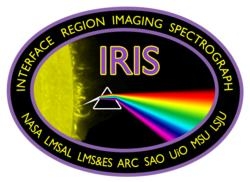Final Testing Underway At Lockheed Martin Facility In CA
The spacecraft and science instrument integration for the Interface Region Imaging Spectrograph (IRIS) – NASA's next Small Explorer (SMEX) Mission – has been completed, and final testing is underway. IRIS was designed and built at the Lockheed Martin Space Systems Advanced Technology Center (ATC) in Palo Alto, CA, with support from the company's Civil Space line of business and major partners Smithsonian Astrophysical Observatory, Montana State University and Stanford University.

NASA's Ames Research Center, Moffett Field, CA, is responsible for mission operations and the ground data system. The Norwegian Space Agency will capture the IRIS data with their antennas in Svalbard, inside the Artic Circle, in northern Norway. The science data will be managed by the Joint Science Operations Center of the Solar Dynamics Observatory, run by Stanford and Lockheed Martin. NASA's Goddard Space Flight Center in Greenbelt, Md., oversees the SMEX project.
"The entire IRIS team is enormously pleased that we've reached this crucial milestone," said Gary Kushner, Lockheed Martin IRIS program manager. "After many months of hard work by the Lockheed Martin team and all of our collaborators and subcontractors in designing, engineering and building the instrument and spacecraft bus, our goal of putting it into orbit is in sight and we look forward to producing great science at a low cost."
Understanding the interface between the photosphere and corona remains a fundamental challenge in solar and heliospheric science. The IRIS mission will open a window of discovery into this crucial region by tracing the flow of energy and plasma through the chromosphere and transition region into the corona using spectrometry and imaging. Here all but a few percent of the non-radiative energy leaving the Sun is converted to heat and radiation. The remaining few percent create the corona and solar wind. Magnetic fields and plasma exert comparable forces in this region, and IRIS is uniquely suited to provide the observations necessary to pinpoint the physical forces at work in this little understood piece of real estate near the surface of the Sun.

"The interpretation of the IRIS spectra is a major effort coordinated by the IRIS Science Team that will utilize the full extent of the power of the most advanced computational resources in the world. It is this new capability, along with development of state of the art codes and numerical models by the University of Oslo that capture the complexities of this region, which make the IRIS mission possible. Without these important elements we would be unable to fully interpret the IRIS spectra," said Dr. Alan Title, IRIS principal investigator and physicist at the ATC Solar and Astrophysics Laboratory in Palo Alto. "With IRIS we have a unique opportunity to provide significant missing pieces in our understanding of energy transport on the Sun. The complex processes and enormous contrasts of density, temperature and magnetic field within this interface region require instrument and modeling capabilities that are now finally within our reach."
The IRIS observatory, scheduled for launch in April 2013, will fly in a Sun-synchronous polar orbit for continuous solar observations on a two-year mission. It will obtain ultraviolet spectra and images with high resolution (1/3 arcsec) – with a cadence of as little as one second apart – focused on the chromosphere and the transition region. Spectra will cover temperatures from 4,500 K to 107 K, with images covering temperatures from 4,500 to 65,000 K.
 ANN's Daily Aero-Linx (04.16.24)
ANN's Daily Aero-Linx (04.16.24) Aero-News: Quote of the Day (04.16.24)
Aero-News: Quote of the Day (04.16.24) Airborne 04.10.24: SnF24!, A50 Heritage Reveal, HeliCycle!, Montaer MC-01
Airborne 04.10.24: SnF24!, A50 Heritage Reveal, HeliCycle!, Montaer MC-01 Airborne 04.12.24: SnF24!, G100UL Is Here, Holy Micro, Plane Tags
Airborne 04.12.24: SnF24!, G100UL Is Here, Holy Micro, Plane Tags Airborne-Flight Training 04.17.24: Feds Need Controllers, Spirit Delay, Redbird
Airborne-Flight Training 04.17.24: Feds Need Controllers, Spirit Delay, Redbird




